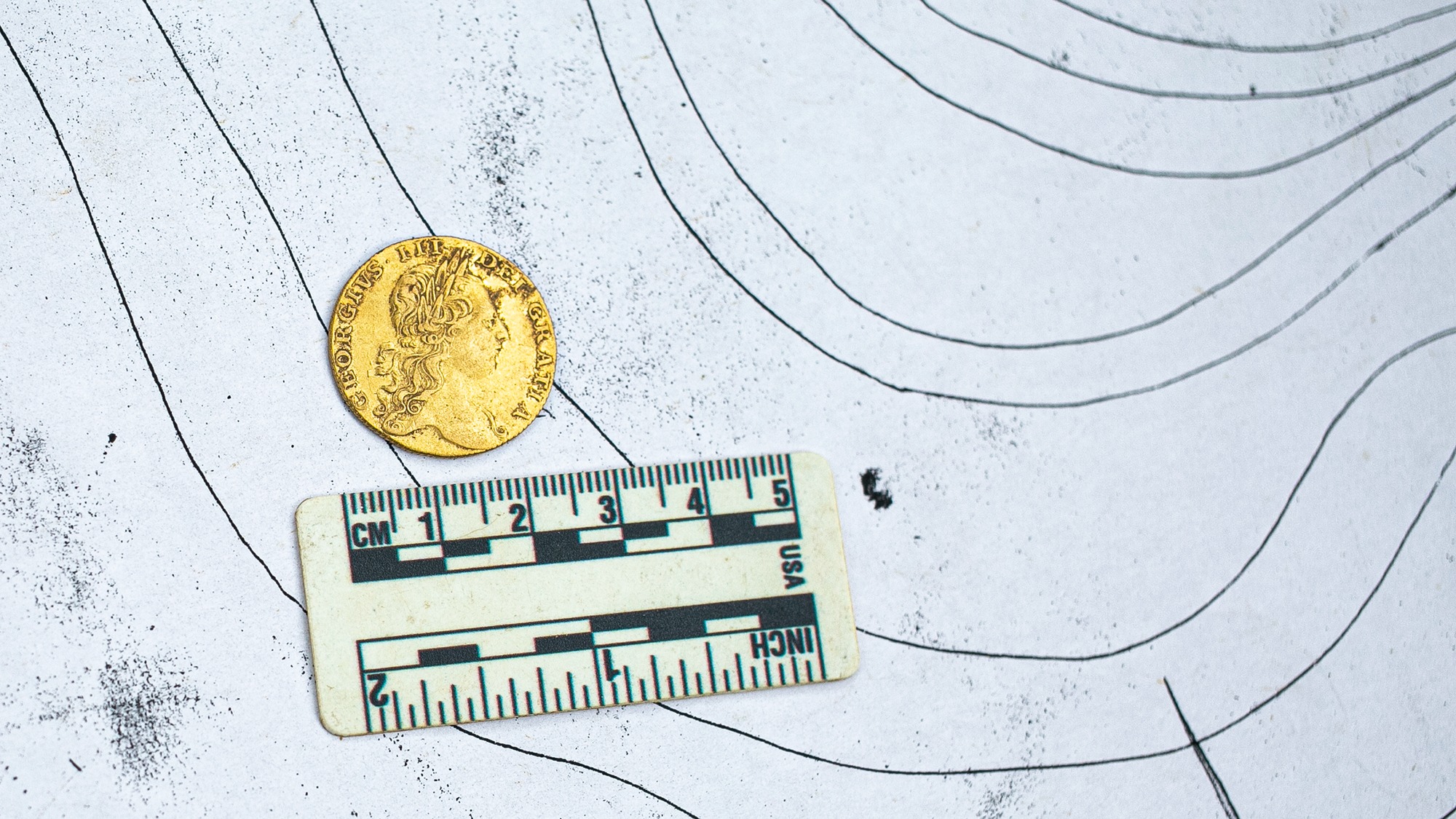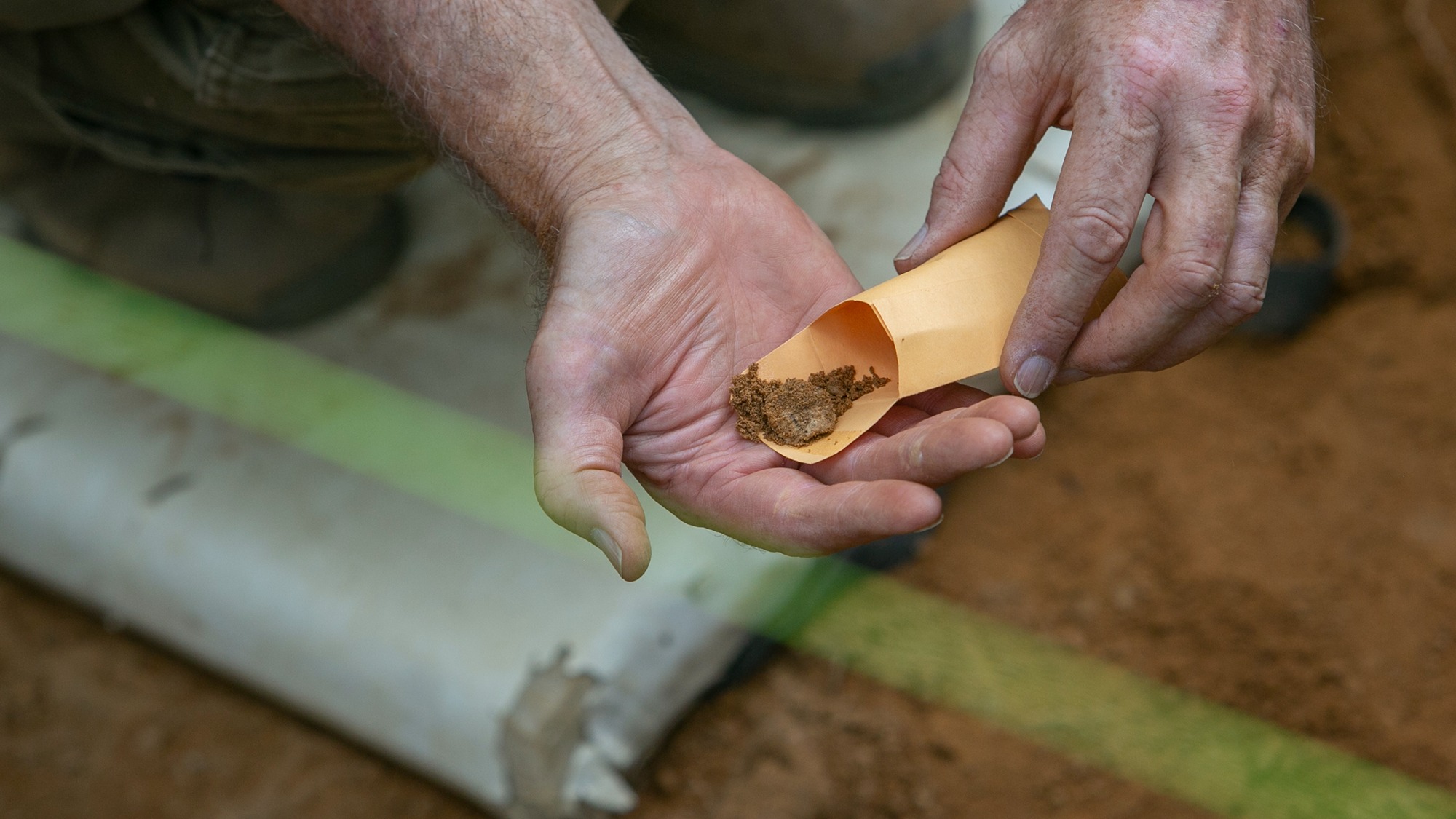Mass grave of Revolutionary War mercenaries and rare gold coin unearthed in New Jersey
Dig volunteer: 'I think I have a bone.'

Researchers at a Revolutionary War battlefield in New Jersey have unearthed a mass grave holding the remains of around a dozen Hessian mercenaries who died during the Battle of Red Bank in 1777.
Volunteer diggers also unearthed a number of treasures, including weapons and a rare 1776 King George III gold guinea coin.
The burial site was discovered on June 26 when a volunteer amateur archaeologist uncovered a human femur (thigh bone) during the excavation of a defensive trench at Fort Mercer, which is part of Red Bank Battlefield Park in Gloucester County, southern New Jersey.
"One of our volunteers who was digging said, 'I think I have a bone,'" Jennifer Janofsky, a humanities and social sciences professor and historian at Rowan University in New Jersey and the director of Red Bank Battlefield Park, said in a statement. "I'll never forget that moment. It was stunning. It was overwhelming. It was sad."
All told, researchers unearthed the skeletal remains of about 13 Hessian soldiers, who were German soldiers hired to serve in the British Army.
Related: Why the British were doomed from the get-go in the American Revolutionary War
Get the world’s most fascinating discoveries delivered straight to your inbox.
In addition to the human remains, the researchers also found five musket balls, pewter and brass buttons, grapeshot, lead canister shot, a knee buckle from a uniform that contained human blood stains, and the gold guinea coin, equivalent to a soldier's pay for a month's work, according to the statement.
The researchers from nearby Rowan University and officials from Gloucester County presented their findings at a news conference on Tuesday (Aug. 2) and said they believe that there could be more remains at the site, AP News reported.
The Battle of Red Bank served as an attempt by the British and Hessians to overtake Fort Mercer, an American fort located along the shore of the Delaware River. They ultimately failed, and approximately 377 Hessian soldiers were killed or wounded during the fight, while the Americans only lost 14 troops, according to another statement, which deemed the battle "the worst defeat [the Hessians] experienced during the Revolutionary War."
Currently, all of the human remains are with the New Jersey State Police Forensic Unit and will undergo DNA extraction so that anthropologists can learn more about the soldiers.
"We're hoping that eventually, perhaps, we can find some of these individuals," Janofsky said in a statement. "If we can extract their stories, and if we can tell their stories, it lets us put a name to a face. And that, to me, is a very powerful moment in public history."
Originally published on Live Science.
Jennifer Nalewicki is former Live Science staff writer and Salt Lake City-based journalist whose work has been featured in The New York Times, Smithsonian Magazine, Scientific American, Popular Mechanics and more. She covers several science topics from planet Earth to paleontology and archaeology to health and culture. Prior to freelancing, Jennifer held an Editor role at Time Inc. Jennifer has a bachelor's degree in Journalism from The University of Texas at Austin.



